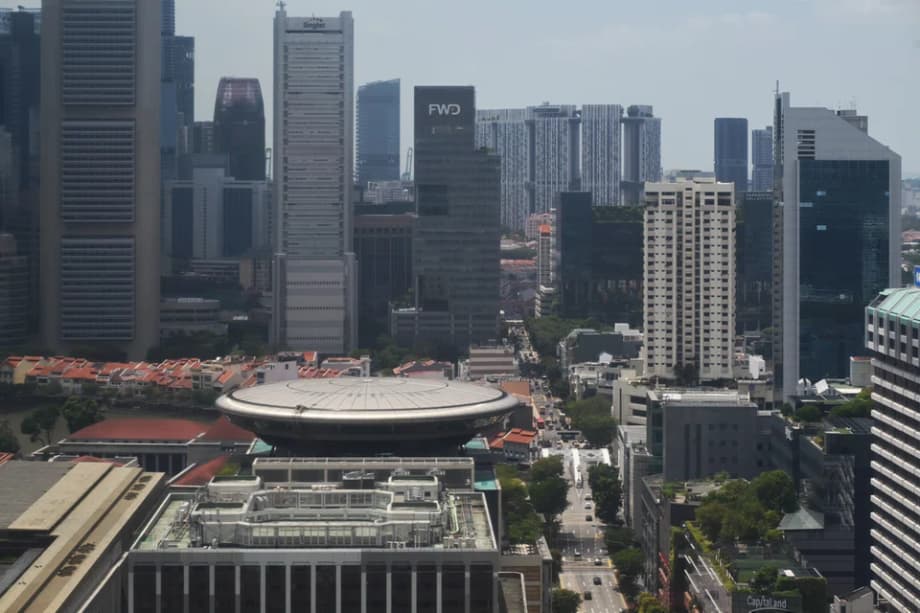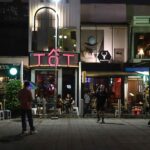Regional alert puts a spotlight on Batam and Singapore
Singapore’s Ministry of Home Affairs has urged residents to stay alert and report suspicious persons or activities, whether at home or overseas. The reminder follows fresh attention on potential radical group activity in parts of Southeast Asia. Indonesian police have stepped up monitoring for extremist movements in areas that include Batam, a popular destination an hour by ferry from Singapore. Officials said there is no specific or imminent threat to Singapore at present, yet the broader risk environment remains elevated. Public vigilance is viewed as a critical layer of security that complements intelligence and law enforcement work.
- Regional alert puts a spotlight on Batam and Singapore
- What the current threat picture looks like
- Why the region matters and what is changing
- How Singapore counters threats behind the scenes
- From awareness to action: SGSecure and public readiness
- Securing everyday places: schools, religious sites, hospitals
- The rise of lone actors and online radicalisation
- What you can do at home and overseas
- What to Know
Regional dynamics continue to shape the risk picture. The situation in the Middle East has stabilised following a peace agreement between Israel and Hamas, but the aftershocks of that conflict, along with ongoing propaganda from global terrorist outfits like the Islamic State in Iraq and Syria (ISIS), continue to influence vulnerable individuals. Authorities stress that the threat is transnational. Singapore’s Internal Security Department, or ISD, works closely with foreign intelligence and security partners to share information and disrupt plots before they materialise.
Across the strait, Indonesian police in Batam have adopted precautionary steps such as tighter supervision at migration gateways in coordination with the Batam Immigration Office. No specific threat has been identified. Police forces in Indonesia, Malaysia and Singapore are also collaborating through initiatives led by the Indonesian National Police headquarters, reflecting the shared nature of the risk and the need for early detection.
What the current threat picture looks like
Singapore’s latest official assessment sets a clear baseline: there is no indication of an imminent attack, but the terrorism threat to the city state remains high. The risk level rose after October 2023 as the Israel Hamas conflict triggered emotive responses worldwide, calls for violence and attempts by terrorist elements to exploit the moment. Authorities also observed an uptick in anti Singapore rhetoric from regional extremist elements on social media. In short, the danger persists even when global headlines cool.
Islamist terrorism remains the primary global threat, with ISIS maintaining a dispersed network and a continuing campaign through affiliates. Al Qaeda retains intent, even if its capabilities appear lower than in past years. In Southeast Asia, ISIS linked or inspired plots continue to surface. Within Singapore, the main driver is online self radicalisation. Since 2015, ISD has dealt with 52 self radicalised individuals under the Internal Security Act. Thirteen were 20 or younger, underscoring a youth dimension that concerns security officials. Since mid 2023, ISD addressed three new cases, involving a 14 year old and a 33 year old influenced by developments in Gaza, and a 16 year old radicalised by far right extremist content.
The Internal Security Act allows authorities to act preemptively to neutralise threats. Some cases result in detention, while others lead to Restriction Orders that tightly regulate the individual’s activities while rehabilitation proceeds. These legal tools sit alongside community based efforts to steer at risk individuals away from violence, indicating a security approach that relies on both enforcement and reintegration.
Why the region matters and what is changing
Singapore’s proximity to busy maritime routes, ferry links and regional travel hubs means it cannot treat terrorism as a distant problem. Batam’s closeness brings convenience for travel and commerce, and it also reminds officials that extremist networks can try to exploit cross border movement. In 2016, Indonesian authorities arrested suspects linked to a plan to fire rockets at Singapore from Batam. A year later, ISIS aligned fighters besieged Marawi City in the southern Philippines, an episode that energized militants across the region and showed how global narratives can localise rapidly.
Indonesian police efforts to tighten migration gateways and coordinate with immigration officers are part of a broader set of measures across the region. Operational cooperation among Singapore, Malaysia and Indonesia enables quicker intelligence sharing and joint disruption. Extremist networks often rely on a mix of online propaganda, informal finance and travel routes. Disrupting any link in that chain reduces the chance that an aspiring attacker can translate intent into action.
How Singapore counters threats behind the scenes
ISD’s approach is preemptive. Officers collect and assess intelligence, work with foreign partners on leads, and intervene before a plot becomes operational. Singapore’s experience in the early 2000s, when a local Jemaah Islamiyah network was dismantled, shows why early action matters. That disruption began with a tip from a vigilant member of the public who alerted ISD to a man with Al Qaeda links. Follow up surveillance and investigations led to arrests in late 2001 and 2002, removing a network that had studied targets and acquired materials.
Singapore has also faced international terrorism incidents on its soil in the past, including the Laju hijacking in 1974 and the SQ117 hijacking in 1991. Those events differ from more recent cases in one important respect. Many individuals dealt with in recent years have been Singaporeans influenced by violent ideologies who either sought to join overseas conflicts or considered attacks at home. The mix of internal and external vectors shapes how authorities plan and how they work with communities.
Close cooperation with neighbors is vital given the way recruiters, facilitators and enablers move across borders. Information exchanges, joint exercises and aligned legal responses increase the odds that early warning signs are detected and acted upon. That quiet work rarely makes headlines, yet it is a large part of why plots are disrupted before they can cause harm.
From awareness to action: SGSecure and public readiness
Public preparedness is the second pillar. The SGSecure movement, launched in 2016, aims to sensitise, train and mobilise residents against terrorism. Its core advisories are simple by design. Run, Hide, Tell guides immediate response during an attack. Press, Tie, Tell teaches basic bleeding control that can save lives before paramedics arrive. The goal is to make these steps second nature so that in a stressful moment, people recall them quickly.
To test how these messages translate into action, the Ministry of Home Affairs staged controlled social experiments in heartland locations in June. Scenarios used actors and realistic props under strict oversight to ensure safety and minimal inconvenience. Reactions were recorded, with consent, to produce an educational web series. The first episode is set for release on July 30. The exercises are designed to capture real behavior, then teach practical takeaways that the public can apply.
Previous SGSecure trials suggest a gap between awareness and action. In one set of public tests, only a minority of passersby noticed suspicious items, and a smaller fraction reported them to the authorities. That gap is the focus of current campaigns. Officials want more eyes on the ground and more people ready to call in concerns that might otherwise go unreported.
Wilbur Sim, director of the SGSecure Programme Office at the Ministry of Home Affairs, has urged the public to turn awareness into action. He explained why learning simple steps matters and how practice builds readiness before a crisis strikes.
It is vital to stay alert and know how to respond if caught in or witnessing similar incidents as those depicted in the films. Building situational awareness and equipping oneself with emergency preparedness skills empowers people to act decisively when it matters most.
The SGSecure series also involved creative partners to reach new audiences. Nimesh Desai, chief executive officer of VML Singapore, said the campaign deliberately placed scenarios in everyday settings to prompt a mindset shift.
These films are a social experiment in themselves, mirroring the way terror threats can unfold in real life unexpectedly, in spaces we take for granted. By embedding these scenarios within everyday content, the aim is to remind Singaporeans that vigilance cannot wait for warning signs.
The movement includes practical tools. The SGSecure mobile app enables users to receive alerts and submit reports on suspicious activity with location and photos. It also provides guidance on emergency protocols. More residents using these features improves the chance that weak signals reach the authorities quickly.
What Run, Hide, Tell means in practice
Simple steps make a difference. These advisories are easy to teach and remember, and they can keep you and others safe until responders arrive.
- Run: Move away from danger, use safe routes, leave belongings behind. Help others only if it is safe to do so.
- Hide: If you cannot escape, stay out of sight. Lock or barricade doors, silence mobile phones and remain quiet.
- Tell: Call the police when it is safe. Provide clear details on location, what you saw and how many attackers you observed if known.
- Press, Tie, Tell: If someone is bleeding heavily, press firmly to stop the bleed, tie a bandage or improvise with cloth, and call for help.
Securing everyday places: schools, religious sites, hospitals
Security work extends across society. In Parliament, Minister of State for Home Affairs Sun Xueling described how the ministry partners with religious organisations, schools and hospitals to strengthen early detection and response. This cooperative work gained urgency after two assaults at places of worship in late 2024 and early 2025. Police increase patrols during heightened concerns, and security agencies engage closely with stakeholders to step up protective measures.
Religious organisations receive support through crisis preparedness programmes that include security self assessments, contingency planning and seminars on the terrorism threat. Schools operate emergency structures, run annual lockdown drills and conduct joint exercises with the Police and the Singapore Civil Defence Force. Healthcare institutions align security standards, run readiness exercises and maintain direct channels with law enforcement. These routines improve coordination and reduce the time it takes to act when incidents occur.
Hospitals have sharpened protocols for armed assailants. Emergency departments are especially exposed because of their open access. Plans emphasise rapid threat recognition, lockdown procedures, communication to staff and visitors, and clear evacuation options. Training and drills matter, since decisive early actions can save lives. Some institutions are exploring technologies such as smart surveillance and automated alerts to support staff in the first minutes of a crisis.
The rise of lone actors and online radicalisation
Singapore’s cases mirror global trends. Lone actors who use simple tools like knives or vehicles remain the dominant risk. The internet accelerates radicalisation by bringing violent propaganda to screens quickly and persistently. ISD has dealt with young Singaporeans influenced by either Islamist extremist material or far right ideas. A 16 year old inspired by the Christchurch mosque attacker was detained in December 2020. A 20 year old was detained in 2021 after planning violence against members of the Jewish community at the Maghain Aboth Synagogue. Since 2023, three more individuals, including two youths, were placed under orders as authorities stepped in before plans took shape.
Triggers often involve overseas conflicts or perceived grievances. That is why the public’s eyes and ears matter, both online and in daily life. When someone you know expresses support for violence, praises terrorist groups, seeks weapons or shows unusual interest in travel to conflict zones, it warrants attention. Do not confront the person or try to investigate on your own. Contact the ISD Counter Terrorism hotline at 1800 2626 473 or submit a report via the SGSecure app. Supportive interventions, including religious counselling and rehabilitation, are part of the process where appropriate.
What you can do at home and overseas
Security is stronger when people take simple steps in advance. Each action helps authorities to detect and disrupt threats early, and it equips households to respond well if an incident occurs.
- Save key contacts: Police 999, SCDF 995 and the ISD hotline 1800 2626 473. Install the SGSecure app and learn how to submit a report quickly.
- Know your exits: At home, work and school, learn escape routes and safe hiding places. Identify safe spots to shelter if evacuation is not possible.
- Practise the basics: Talk through Run, Hide, Tell and Press, Tie, Tell with family members, including children and older parents. Short conversations help build confidence.
- Equip for first aid: Keep a small kit with gloves, gauze and cloth bandages. Improvised tourniquets can work in a pinch, but training helps.
- Join in: Look for SGSecure events in your community or sign up as an SGSecure Responder to receive alerts and contribute skills when needed.
Travelers should apply the same mindset overseas. Stay aware of surroundings in transport hubs and crowded venues. Follow local advisories, know emergency numbers and identify exits at hotels and malls. If you see something suspicious, alert local authorities and, if appropriate, inform Singapore authorities through the SGSecure app. Guidance and resources are available on the SGSecure site at sgsecure.gov.sg. For a fuller view of the national threat landscape, you can also read the latest Terrorism Threat Assessment on the Ministry of Home Affairs site at mha.gov.sg.
What to Know
- MHA says there is no specific or imminent threat to Singapore, but the general terrorism threat remains high.
- The reminder on vigilance follows Indonesian police monitoring for radical activity in nearby Batam and other areas.
- ISD works closely with foreign partners to share intelligence and disrupt plots before they materialise.
- Online self radicalisation is the main driver in Singapore; 52 individuals have been dealt with under the ISA since 2015, including 13 youths.
- Public preparedness is central. SGSecure advisories Run, Hide, Tell and Press, Tie, Tell aim to build fast, effective responses.
- MHA ran controlled social experiments in June to test real world responses and will release a teaching web series from July 30.
- Schools, religious institutions and hospitals conduct regular drills and planning with Police and SCDF to improve readiness.
- Lone actors using simple weapons remain the dominant risk, and early reporting by the public can stop an attack.
- If you suspect radicalisation or observe terror related activity, contact ISD at 1800 2626 473 or report via the SGSecure app.












